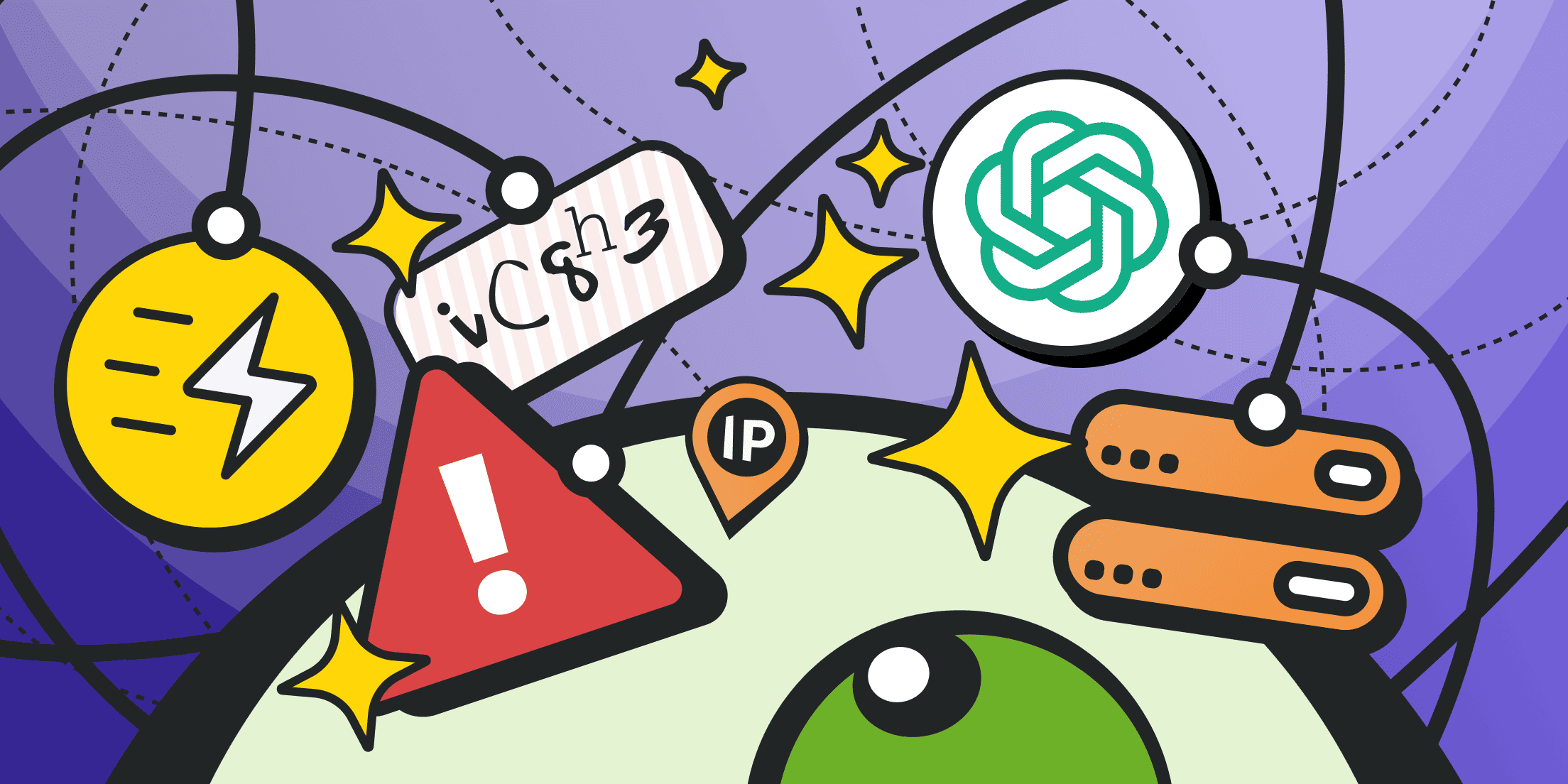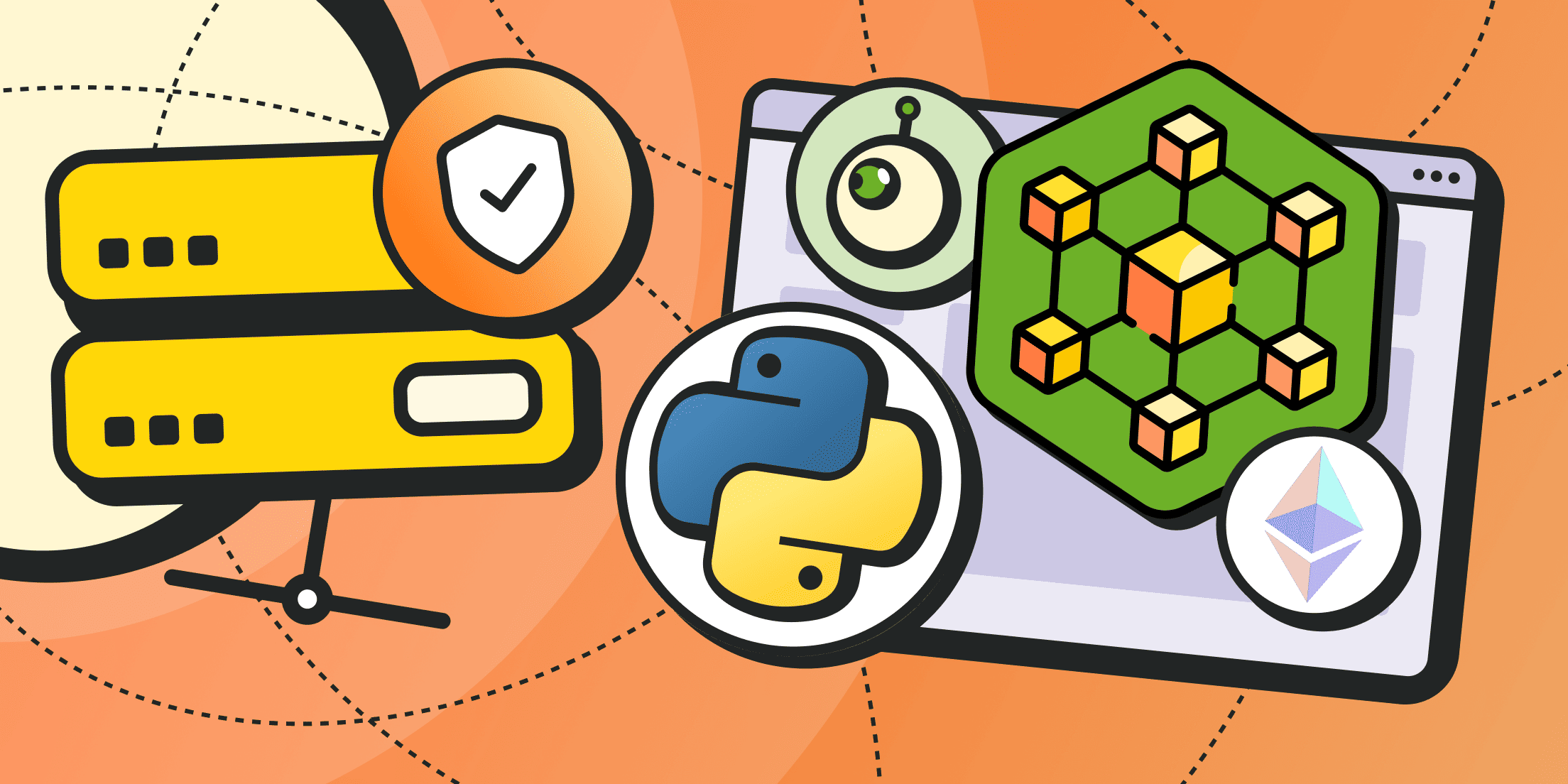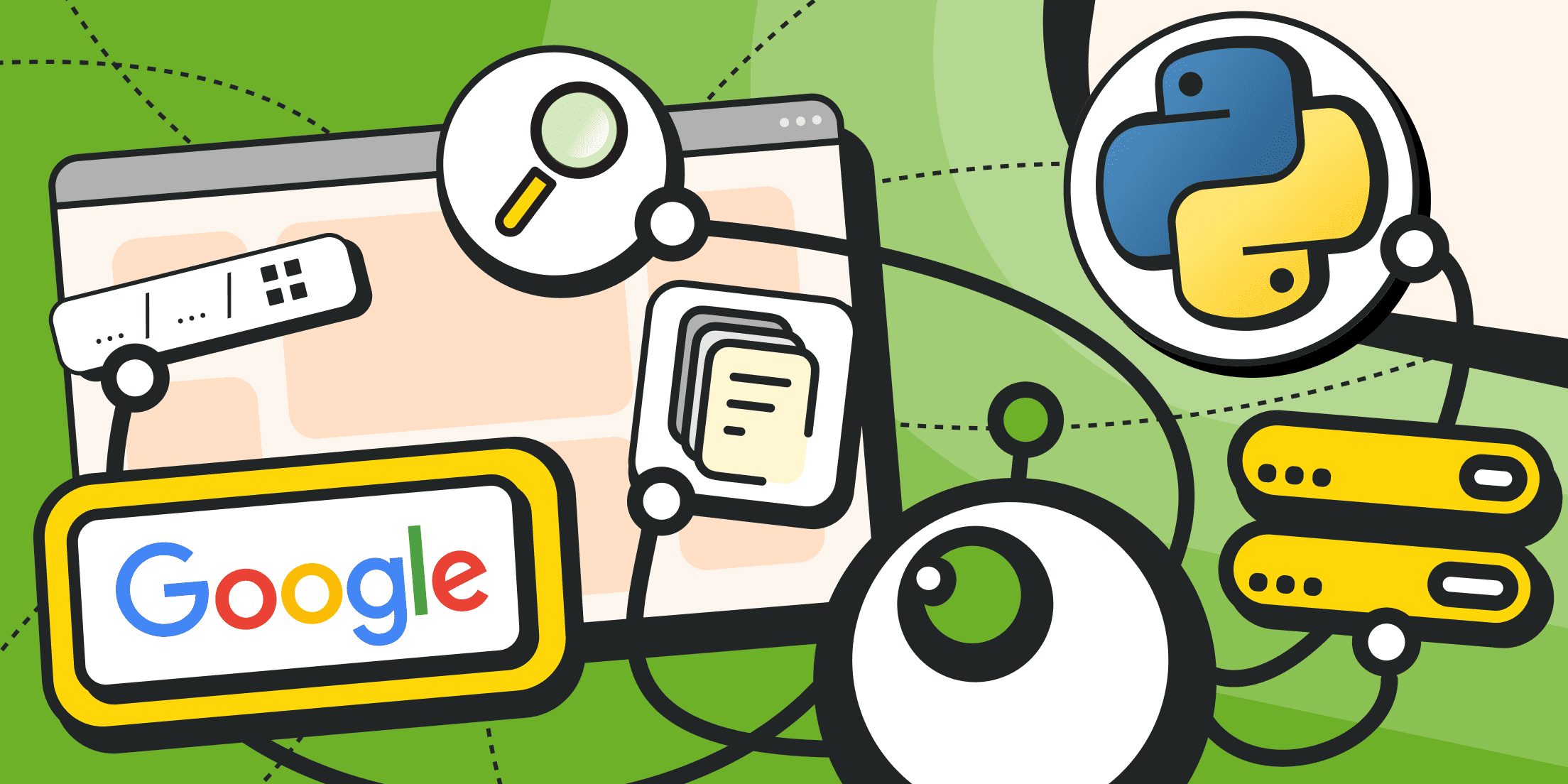We’ve repeatedly raised the point that parsing algorithms are getting increasingly complicated. The problem isn’t only in bot protection — though that is also present and constantly improving. The fact is that the very process of creating websites has itself become more complicated. Websites are no longer built out of simple HTML code. Now, they are full-fledged web applications that rely on massive amounts of JavaScript and distributed CDN infrastructures (for delivering static content).
The user interface (frontend) is built using specialized builders like Jekyll, Hugo, etc. Comprehensive frameworks like React, Vue, Angular, etc. are at their core. They produce an extremely complex dynamic code, where identifying any clear structure is sometimes nearly impossible.
This material is about the future and trends in web scraping, aimed at understanding how to design mechanisms for bypassing bot protection systems.
The State of Web Scraping in 2025
Web scraping was initially associated with analyzing HTML page structure. For those tasks, libraries like BeautifulSoup or lxml were more than enough. The simplest websites deliver their content directly in the body of the HTTP response, so even a basic client like Python requests or node-fetch can handle data collection.
However, by 2025, the situation had drastically changed. Today, websites are increasingly built as dynamic SPA applications, where a significant portion of content is loaded directly in the browser via JavaScript.
Now, you can’t just grab a page and parse it — you first need to obtain the final HTML page version, which is generated dynamically and often depends heavily on user interactions.
From HTML Parsing to Browser Emulation and Beyond
Headless browsers currently remain the main web scraping tool. Unless a site page is executed inside a real browser (specifically, its JavaScript engine), you won’t be able to access the resulting HTML. Consequently, scraping data becomes impossible without this step.
If you skip the browser engine, you’ll only get references to a list of JavaScript files instead of usable HTML. That’s it. Yes, they’ll be formatted according to HTML standards, but there won’t be any data. Moreover, scripts may load other scripts, which then load additional ones, etc., something like nesting dolls (a recursive process).
You need a dedicated software interface to start interacting with browsers from the code. Libraries like Puppeteer, Playwright, or Selenium provide APIs for this purpose. We’ve already covered each of them in detail, with code examples.
Since many sites now tie their features to subscriptions and user accounts, large-scale work with profiles requires specialized tools for digital fingerprint rotation. This is exactly why anti-detect browsers were created.
Moreover, modern bot protection systems can analyze user behavior and actions. That’s why it is crucial to simulate “human-like” activity: moving the cursor, filling out fields character by character, scrolling the page, etc.
The Rise of Web Scraping APIs
Since the starting toolkit for any parser is practically the same — a combination of a headless browser, a web driver library, and rotating proxies (for location switching and bypassing blocks) — ready-made web services offering a complete infrastructure have become increasingly popular.
In other words, you can get both the browser and the proxy in a turnkey format. Communication with such remote containers is carried out via a special interface — a web scraping API. This interface often includes command sets for browser control (which pages to open, where, and what to fill in) and proxy management (which location or device type to connect from).
Some services even work without an API — through a simple web interface: you upload a list of target pages and then download the resulting data tables.
What could be easier? You send the server a list of sites/pages to scrape, set the location parameters (country, region, or city to connect from), and simply collect ready-made structured data. Profit!
All that’s left is paying for the right subscription and forgetting about writing your scripts or deploying servers.
One example of a ready-made scraper is Froxy Scraper, which works on a prepaid package of requests/tokens. It even provides practical instructions for collecting data from Google search results or marketplaces like eBay.
AI-Powered Web Scraping: What’s Real and What’s Just a Hype

What is AI-based web scraping? Technically, it means leveraging artificial intelligence technologies to extract structured data. For example, a neural network can be used to recognize screenshots, generate descriptions for images or videos, transcribe audio, detect repeating patterns in page layouts, etc. AI can also work directly with the entire page's source code or with specific blocks.
Coming back to anti-scraping trends, some web services have learned to make the HTML structure unique for each page. For instance, they replace standard CSS classes with identifiers generated for every new session.
In such cases, extracting recurring patterns becomes impossible. It’s much easier to hand the data over to a neural network for analysis. The AI will figure out which block contains the price, which one is the product title, which shows the rating, etc. It can then return the data in a structured form — already marked up in JSON, XML, or another format.
Pros and Limitations of AI Web Scraping
Main benefits of AI-based scraping are as follows:
- Ability to handle complex, dynamic layouts. A neural network “sees” the final rendered code and can identify semantic blocks and find necessary elements without relying on rigid patterns typical of classical scraping.
- Collecting all data in a single pass. You can assign multiple tasks to the AI at once, asking it to extract different data types. Each data stream can have its own format and markup, but the neural network can return everything in one structured response (a single iteration).
- Possibility to work with data semantics. AI can deliver raw data, categorize it, and add valuable attributes for example, sentiment analysis of a review/message, a summary, keywords/tags, etc.
- Easy integration and ready-made libraries. Many AI models work via API, independent of platform or programming language. Moreover, official developer teams often provide ready-to-use libraries for simple integration in popular languages like Python, Java, Golang, etc.
Cons and limitations of AI-based scraping:
- It’s expensive. You either need to maintain high-performance hardware with a local neural network (usually requiring costly GPUs or CPUs) or pay per request based on token usage (which depends on language, content type, and task complexity). Anyway, each request to an AI isn’t free, and the budget can skyrocket for large-scale scraping.
- AI can hallucinate. The thing is, neural networks are designed to always return the data, regardless of accuracy. This means results can’t be trusted with 100% certainty. AI might “invent” a plausible-looking dataset that ruins your entire online research.
- It’s complex. Especially when creating vector databases and syntactic data analysis libraries like LangChain and LangGraph, these tools are generally meant to simplify development, but learning their syntax and architecture alone can take a lot of time. This is not about beginner-level work; it’s more about serious development for the enterprise niche.
Summary: Neural networks and AI can definitely assist with scraping, especially if you’re stuck dealing with ever-changing layouts. Currently, there’s still no out-of-the-box AI solution for scraping. Neural networks can’t directly interact with websites independently — they must be fed the data first. Consequently, the data should be initially retrieved. And AI certainly won’t bypass website protection systems for you (like solving CAPTCHA — that’s pure hype.
Bot Protection Is Getting Smarter

Checking for JavaScript support was considered the pinnacle of sophistication before. If it wasn’t available, the assumption was that the visitor wasn’t human, either. The times have changed, however. Websites have learned not only to check the User Agent but also to analyze complex digital fingerprints: location, IP type, supported fonts, screen resolution, CPU and GPU models, etc. Some services even employ AI to evaluate natural user behavior.
From Captcha v2 to Captcha v4 and Beyond
The evolution of protection is easy to track through the development of CAPTCHA algorithms:
- Captcha v2 (first released in 2014) required users to pick images containing buses, traffic lights, etc. Today, neural networks can be trained to solve such puzzles fairly well.
- Captcha v3 (first released in 2018) moved away from images and instead calculated a risk score based on user behavior. The more natural the clicks and scrolling, the higher the chance of passing.
- Captcha v4 (around 2021-2023) introduced more complex scenarios, including hidden checks, dynamic elements on the page, and timing analysis between user actions.
The newest trends lean toward “invisible CAPTCHA.” Users and their behavior are assessed in the background, without presenting puzzles at all.
Fingerprints, Behavioral Traps, and Timing Analysis
Digital fingerprints can include hundreds of different parameters. This means that even if a headless browser parser changes its IP address or User-Agent value, a site can still recognize it using other technical markers. These include cookies, distinctive behavior patterns (scrolling, cursor movements, click delays), and interaction with website elements.
Proxy Technologies in the Epoch of AI Anti-Bots

In the past, simply changing your IP address was enough for a target site’s protection systems to “forget” you. But now, since digital fingerprints and IP characteristics are analyzed, that’s no longer sufficient.
What matters most today is not just IP rotation but the quality of the IP address: its relation to residential networks (residential proxies) or mobile carriers (mobile proxies). For example, server-based IPs are easily identified and always considered suspicious (a high-risk group). They can be blocked without major consequences for a site’s real user base.
The “cleaner” the IP pool and the more natural it looks to the target audience, the lower the chances of being blocked.
For stable, large-scale scraping, make sure to use a trusted proxy provider with a wide, clean IP pool — ideally with rotation options and easy integration into anti-detect or headless browsers. One such solution is Froxy, offering over 10 million mobile and residential IPs with flexible rotation settings and verified, clean addresses that help your scraper behave like a real user.
The Future: Multi-Level Scraping and Hybrid Approaches
Web scraping is no longer just about scripts pulling HTML from websites. More and more proxy providers are considering offering a complete infrastructure in the format of “headless browser + proxy for scraping.” With such services, building multi-level systems for regularly collecting large data volumes becomes easier and faster. At each level, there is a specific tool or technology that effectively solves its own set of tasks:
- Fast Data — working with the target site via official APIs to obtain structured information within official limits (without bypassing restrictions).
- Standard Low-Level Scraping — extracting data from HTML if the site still provides a classic HTML version.
- High-Level Scraping — using headless browsers for sites and pages with heavy dynamic JavaScript.
- Intelligent Scraping — extracting complex data when the code and structure are obfuscated, using AI for recognition.
- Adaptive Agents — a set of algorithms and modules that decide whether to simulate user behavior and which scraping layer/pipeline to choose.
- Post-Processing — the final stage where all data is normalized and aggregated into a unified dataset for quick search and analysis.
Combination of AI Agents + Scraping APIs + Proxies
Instead of the suggested multi-level model, hybrids may be used, where part of the tasks is handled by AI (e.g., letting the parser auto-adjust when needed — neural networks can generate DOM selection rules on the fly) or ready-made web services (scraping APIs without direct interaction with the target resource).
Proxies are increasingly offered as a ready-to-use connectivity layer. They track consumption statistics, handle rotation based on specified criteria, automatically clean pools from problematic IPs, etc.
It’s even better when proxies work in tandem with a built-in scraper. In this case, the client doesn’t have to worry about load balancing, rotation, or other technical issues. They simply make a request and receive structured data, ready to be fed into downstream analysis pipelines.
Conclusion

Web scraping is becoming more like the microservice architecture of web applications, where each module (AI agent, proxy provider, etc.) solves a narrow task. When needed, modules can be quickly scaled up or down, depending on scraping goals and volumes (similar to orchestration).
Cloud-based scraping via API is already available, and this tendency is only growing stronger. It’s entirely possible that in the future, clients won’t buy proxies and scrapers separately, but rather complete hybrid data-processing pipelines as a service.




